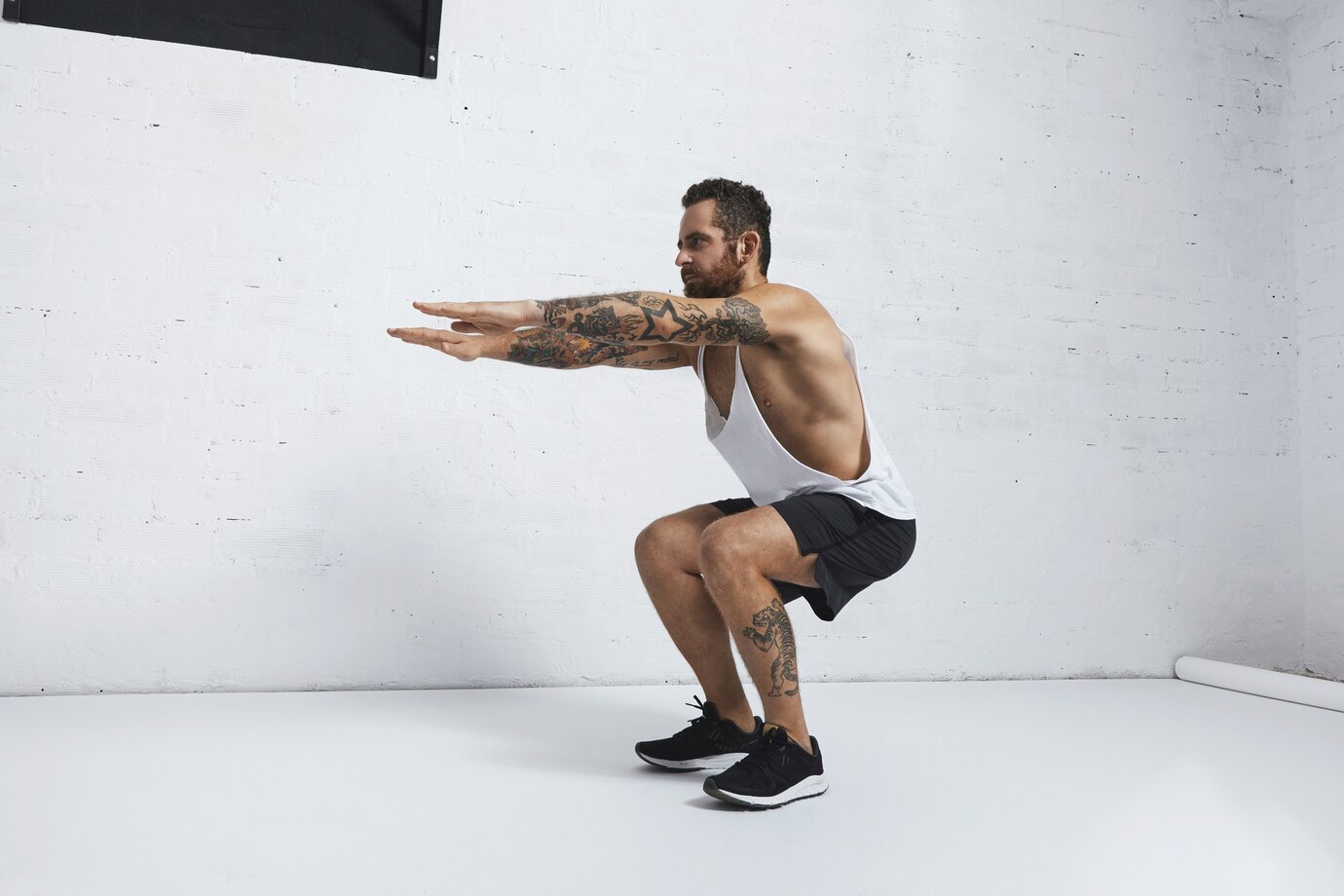Table of Contents
The Perfect Squat is one of the most fundamental and effective exercises for strengthening your lower body. It engages multiple muscle groups, including the quadriceps, hamstrings, glutes, and core, while also improving overall stability and functional movement.
Have you ever found yourself standing in front of a squat rack, barbell at the ready, and wondering, “How do I perform the perfect squat?” If so, you’re not alone. Many fitness enthusiasts, from beginners to seasoned athletes, have grappled with the nuances of this foundational exercise. It’s a quest for perfection that often begins with a mix of curiosity, determination, and a dash of trepidation.
The squat, with its intricate blend of form, balance, and sheer willpower, can be a daunting endeavor. It’s a symphony of muscles working in harmony, a dance between your body and the barbell, a test of your physical and mental fortitude. But it’s also a beautiful journey of self-discovery and growth.
So, if you’ve ever asked yourself, “How do I perform the perfect squat?” – join me as we dive headfirst into the world of squats, one rep at a time. Get ready to build strength, confidence, and a newfound appreciation for the remarkable capabilities of your body. It’s time to step up to the squat rack and write your own story of strength, one squat at a time.
How Do I Perform The Perfect Squat?
1. Set Up Your Position
Start by standing with your feet shoulder-width apart, toes pointed slightly outward. Keep your spine in a neutral position, with your chest lifted and your shoulders relaxed. Engage your core muscles by drawing your belly button in towards your spine.
2. Initiate the Movement
Begin the squat by initiating the movement from your hips. Push your hips back as if you were sitting back into a chair. This movement helps activate your glutes and hamstrings while maintaining a balanced weight distribution.
3. Lower Down
Continue lowering your body by bending your knees. Keep your knees tracking in line with your toes throughout the movement. Aim to lower yourself until your thighs are parallel to the ground, or slightly below if you have the flexibility and mobility.
4. Maintain Proper Alignment
While descending into the squat position, focus on maintaining proper alignment. Ensure that your knees are in line with your toes and not collapsing inward. Your chest should stay lifted, and your back should remain straight, avoiding excessive rounding or arching.
5. Keep Weight Centered
Maintain an equal distribution of weight between your heels and the balls of your feet. Avoid shifting too far forward onto your toes or leaning excessively backward. This balanced weight distribution helps you maintain stability and engage the proper muscles.
6. Engage Your Core
Throughout the squat, engage your core muscles to provide stability and support for your spine. Imagine creating a strong, stable cylinder around your midsection by activating your abdominal muscles. This will help protect your lower back and maintain proper form.
7. Drive Through Your Heels
As you ascend from the squat position, focus on driving through your heels. This helps engage your glutes and hamstrings, providing a powerful upward movement. Keep your chest lifted and maintain the alignment of your knees with your toes.
8. Breathe
Remember to breathe throughout the squatting movement. Inhale as you lower your body and exhale as you push back up. Controlled breathing helps maintain stability, enhances your performance, and provides oxygen to your working muscles.
Additional Tips:
- Start with bodyweight squats or use a light weight until you become comfortable with the movement and have mastered proper form.
- Progress gradually by increasing the weight or resistance as your strength and technique improve.
- Consider seeking guidance from a fitness professional to ensure proper form and receive personalized feedback.
Final Thoughts – Perfect Squat Technique
By following these step-by-step guidelines, you can perform squats with proper form, maximizing the effectiveness of the exercise while minimizing the risk of injury. Remember, proper form is key to getting the most out of your squatting workouts and achieving your fitness goals. So, grab a barbell, or kettlebell, or simply use your body weight, and start squatting your way to stronger, healthier legs and core!


